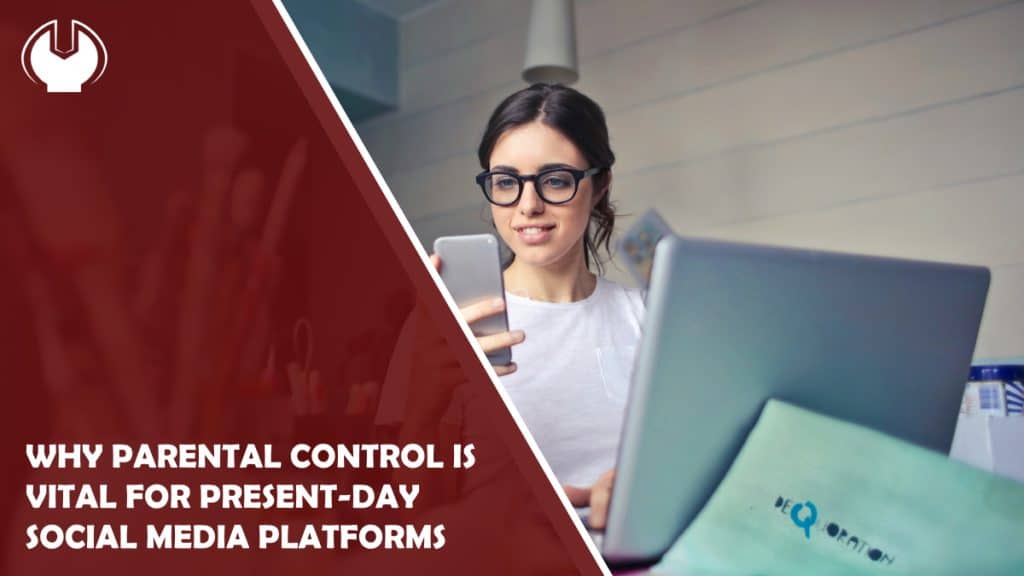Social media: it is something that has transformed how we connect and share. It’s hard to imagine a world without Instagram stories, TikTok videos, and Snapchat filters.
That being said, while these platforms offer exciting ways for people to stay in touch, they’ve also brought several new challenges, especially for parents.
Your child is scrolling through their Instagram feed; innocent enough, right? However, beneath those pretty pictures and dance videos lie pressures and influences that could affect their mental health and self-esteem. That’s where parental control features step in.
Back in 2023, Meta introduced parental control features on its Messenger app. Through its parental supervision feature, Meta would go on to allow parents to see whom their kids are interacting with on Messenger.
Instagram launched its parental control features back in March 2022. Since then, it has regularly updated the feature and its usage policy. Through the feature, parents can monitor their children’s activities on Instagram.
It’s evident that social media platforms these days will, for sure, have parental control features, but why? How has this one feature become a must-have across every existing social media app or platform?
The Power of Setting Limits
Just like you set boundaries for when your child can watch TV, it’s important to establish rules around their social media usage. US teens spend almost five hours a day on average on social media. Parental control features on platforms like Facebook, TikTok, and Snapchat allow you to manage screen time, monitor interactions, and set age-appropriate content restrictions.
These controls act as a digital safety net. If a child spends hours scrolling through social media, it’s easy for them to get lost in a rabbit hole of content. With parental control, parents can set daily limits, receive notifications on suspicious activities, and even block certain types of content that could be harmful.
It’s not about prying or invading privacy. This feature is all about guiding young minds through a complex digital landscape until they’re ready to navigate it on their own.
Protecting Children’s Mental Health
The truth is, we’re seeing a rise in concerns about how social media affects young users. A significant part of the problem is that platforms like Instagram are designed to keep users engaged, often at the expense of their well-being.
Social media platforms have been repeatedly called out for causing mental health problems like depression and anxiety. Children and teenagers are particularly vulnerable to the effects of constant exposure to curated, filtered, and sometimes unrealistic content.
Instagram, for instance, has been scrutinized for its impact on young users. The platform can lead to increased feelings of anxiety, depression, and poor body image among teenagers. In fact, there’s a whole lawsuit against Instagram for the impact it has had on kids.
As per the Instagram lawsuit, the platform presents a distorted reality. Kids often compare themselves to influencers, models, and even their peers, leading to a skewed perception of what “normal” looks like.
TorHoerman Law reports that the lawsuit also claims that Instagram’s algorithms are designed to be addictive. Thus, you have your kids constantly returning to the platform for its content, which makes parental control so vital.
Addressing the Issue of Cyberbullying
One of the more alarming aspects of social media is how easily it can facilitate cyberbullying. Unlike traditional bullying, which is often limited to physical spaces, cyberbullying can follow a child home, affecting their mental well-being around the clock.
Social media platforms have taken steps to combat this issue, but it’s still a prevalent concern. Parental control features can be a game-changer in this regard. By monitoring messages and comments, parents can step in if they see signs of bullying.
The Influence of Algorithms and Ads
Social media platforms make money by keeping users engaged, and they do this by using algorithms to show content that captures attention. This means that children may be exposed to a barrage of ads, some of which may not be appropriate.
From products promising quick weight loss to posts that glamorize risky behavior, the influence of these algorithms on young, impressionable minds can be significant.
Platforms like Facebook and Instagram use data to target ads based on what users have interacted with. Thus, if your child is interested in fashion, they might start seeing a lot of content pushing beauty standards that are impossible to achieve.
By utilizing parental controls, you can manage ad settings, limit exposure, and block content that might promote harmful behavior or unrealistic expectations.
Frequently Asked Questions (FAQs)
How should you avoid invading your kids’ digital space and privacy?
To avoid invading your kids’ digital space and privacy, establish open communication and set clear boundaries together. Respect their need for autonomy by trusting them to make responsible decisions online. Monitor their activities discreetly, focusing on guidance rather than control, and encourage them to share any concerns.
What should social media platforms do to avoid harming children’s mental health?
Social media platforms should implement stronger age verification measures, limit addictive features like endless scrolling, and prioritize content moderation to filter out inappropriate material. They should also provide resources on mental health and promote balanced usage, encouraging breaks and offline activities for children.
How does TikTok keep young users hooked on the platform?
TikTok keeps young users hooked through its highly engaging, short-form videos that cater to varied interests. Its algorithm learns users’ preferences quickly, delivering an endless feed of tailored content. The platform’s easy-to-use interface, viral challenges, and interactive features keep users engaged for extended periods.
The Balance Between Freedom and Safety
Social media isn’t going anywhere, and that’s not necessarily a bad thing. When used wisely, it’s a fantastic tool for learning, staying connected, and even finding a sense of community.
However, the key is to ensure that children use these platforms safely and mindfully. Parental control features give parents the ability to oversee and intervene when necessary, without completely shutting off their kids’ access to the digital world.
